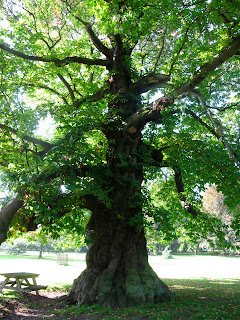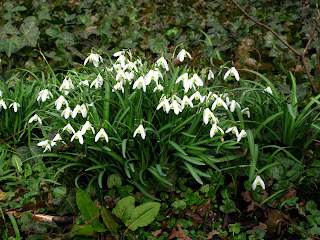We went to Yorkshire Wildlife Park today, which hasn't even been opened one year yet (it opened to the public on 4th April 2009). The park is still growing and developing and there are huge expanses of bare soil and building work in progress, and at times the tracks are too rough, barely doable with a pushchair, but we managed. There is a cafe with hot meals - but no expresso machine-, a picnic area, a children's play area and a Jungle Play Barn with big slides, which were a hit with the kids.
Black and White Ruffed Lemur
Sunbathing Ring-Tailed Lemurs
Ring-Tailed Lemur
Some of the enclosures are very effective and allow very close contact with the animals. The Wallaby Walkabout and the Lemur Woods are walk through enclosures where you can approach - and they can approach you! - a gang of Ring Tailed Lemurs, a pair of Black and White Ruffed Lemurs, a pair of Browm Lemurs and of course, wallabies. We got to the Lemur Wood at food time and it was a great opportunity to see the lemurs in action, the agressive Black and White ones chasing the ring tailed ones for pieces of fruit and veg. It was a bit chilly in the wind so as soon as the food was eaten the lemurs hug each other or hid in their huts. The sun appeared behind the clouds and immediately, the lemurs adopted a sunbathing position which looked like they were worshipping the sun.
One of the hits with the park are the African Painted dogs (top picture), a pack of four, which are part of a captive breeding program. Their enclosure is quite large and the animals look healthy and alert. Amazing to get such close views of one of the most powerful African carnivores.

A Meerkat colony is also a great attraction, a square enclosure with side windows at ground level. Always active, there is always something happening with Meerkats. An individual on the lookout, another one digging, a pair that stand up to sunbathe...
A Racoon Dog
A donkey happy to interact with the public. The park was previously a farm opened to the public, and there are still many farm animals, goats, cattle, chickens, geese and sheep.
An Red Water Hog enjoying a rub on a tree. After a good side rub, it scratched the tree with its tusks. There are visible scratches on the trunk.
The pair of Red Water Hogs have thoroughly dug out their wooded enclosure. I wonder how much longer the trees, many with exposed roots, will stay standing. The place looks like a bomb site!
The African Plains area, where zebra, antelopes and ostrich are kept are a large enclosure indeed, but you need a telescope to see the animals - and there is actually one available - as they prefer to stay away from the public, which is disappointing.
There is a small wood with a footpath and informative panels next to it.
The 13 rescued lions from a Romanian zoo are already in the park, but their enclosure is not yet finished. If you want to see the lions check the website to avoid disappointment.
The website is very slow in loading, but has information on prices, opening times and activities.
Indeed worth a visit, but I would recommend visiting in warm weather, so that the animals are more comfortable outside.
Yorkshire Wildlife Park website
Location map
View Larger Map

















































